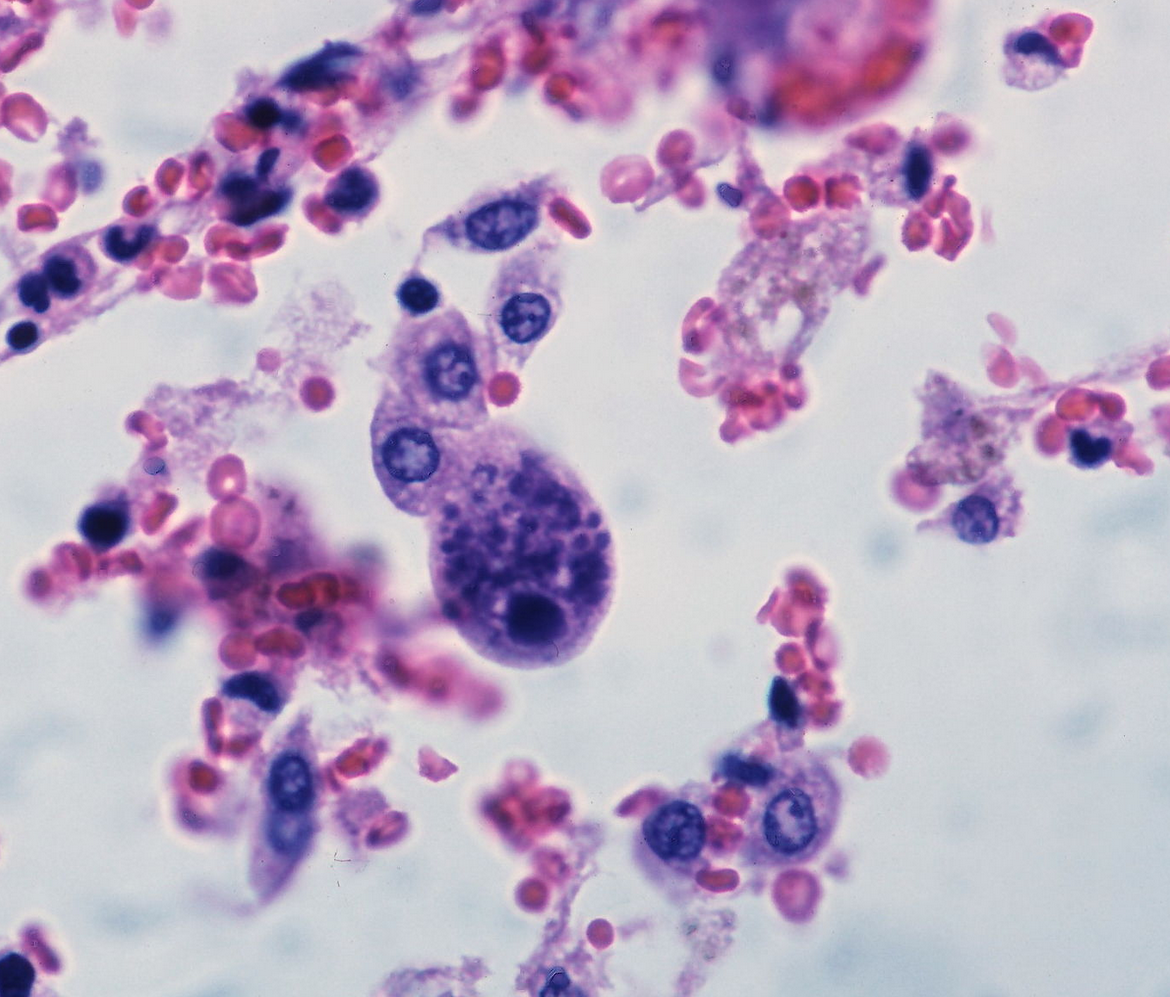The virus of the month: HCMV
Human cytomegalovirus, what is it all about?
Human Cytomegalovirus (CMV) is a double stranded DNA virus of the Herpesviridae family with a high rate of dissemination in the human population. The virus has a broad tropism, gaining access to fibroblasts through its trimeric gHgLgO complex, and to epithelial, endothelial, and myeloid cells through the pentamer gHgLpUL128-131A (more on cell tropism and entry receptors in our blog post). HCMV infection, although asymptomatic in most individuals, has been linked to the development of cardiovascular diseases and the development of particular cancer types. Like all herpesviruses, HCMV persists in the immunocompetent host by way of a latent or persistent infection, with hematopoietic cells as an important reservoir of dormant virus. Immunocompromised hosts, who undergo viral reactivation or receive a primary infection, suffer from severe morbidity and often mortality, with the virus affecting a variety of organ systems. Reactivation of this infection is frequently encountered during pregnancy and in newborn babies, organ transplant patients, and those suffering from acquired immune deficiency syndrome (AIDS). Clinically, HCMV is a major problem, and an effective vaccine formulation or antiviral therapy remains elusive. While drugs like Ganciclovir inhibit viral replication and are approved for used in man, their side effects can be severe in the short and long term, so the race to identify better and safer compounds is still on.
HCMV: the toolbox
A better understanding and characterization of the mechanisms of primary and latent HCMV infections is essential when designing therapeutic strategies. The development of sensitive methods has allowed the characterization of multiple HCMV strains. Choice of cells (rigorously human!) and viral strain is important. HCMV strains can differ both genetically and phenotypically, either due to natural inter-strain polymorphisms or alterations occurring during extended propagation in cell culture. With increasing knowledge about phenotypic and genotypic differences between these strains, it is clear that the choice of the virus strains used for experiments will greatly influence the results of a certain project. It might be particularly relevant to decide:
- Whether recent clinical HCMV isolates versus established laboratory strains should be used? When HCMV is isolated from patient specimens, it is regarded as a clinical isolate. These are ideal for correlative studies between viral genetic polymorphisms and clinical symptoms and might lead to the identification of new gene variants. Testing a new antiviral or therapy against clinical isolates gives confidence that an approach developed on lab-adapted strains could actually work against circulating viruses. However, isolates are not plaque-purified and, therefore, not genetically pure. Also, isolates do not yield high titer cell-free virus stock, making these unsuitable for downstream techniques that require high amounts of virus, like synchronous infection. Also, such isolates are genetically unstable due to selective pressure under certain cell culture conditions.
- When it’s suitable to use a laboratory strain, what is the best strain for a given cell type or to investigate a particular pathway? There are multiple laboratory strains; the most frequently used are AD169 (and its derivatives varATCC, varUC, varUK) and Towne (and its derivatives varS and varL). Other useful HCMV strains are Merlin, Toledo and TR. These well-established cell culture-adapted HCMV strains combine the advantage of high titer production with much-published data. Differences among the strains include the titers that can be achieved, the tropism of certain cell types, and the degree to which non-essential genes have been lost during propagation.
- Will the project require a strain that can be easily modified by genetic manipulation? To facilitate mutation of viral genes in the context of replicating virus, many relevant HCMV strains have been cloned into F1 plasmid vectors that allow for amplification, mutation, and selection of the viral DNA as bacterial artificial chromosomes (BACs) in bacteria. The genomes of strains AD169, VR1814, Merlin, TR, PH, Toledo, and TB40/E are all available as BAC-cloned viruses. These strains carry the genetic characteristics of their parental strain, but differ in the viral genes that were replaced with the BAC cassette.
Multiple and distinct HCMV strains are available and the appropriate choice of strain depends on the specific experimental design and requirements. At VRS we use the Merlin strain, originally derived from the urine of a congenitally infected infant. This HCMV strain grows easily in tissue culture but is considered sufficiently low passage to be one of the closest to clinical isolates. Moreover, due to the thorough characterisation of this strain and the fact that it largely represents the genetic equivalents of an HCMV clinical isolate, Merlin HCMV is regarded as 1st WHO reference standard.
Contact us concerning your HCMV research and we will be able to assist progressing your project from the planning stage to results.




